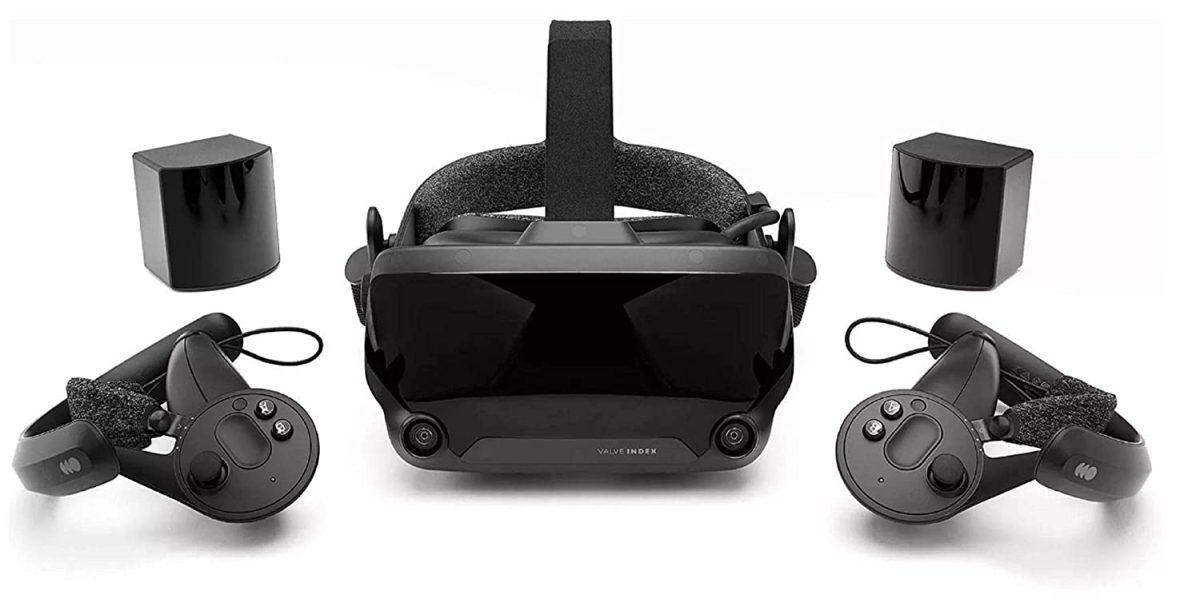While the console gaming world fixates on the button layout, features and exclusive games for the Playstation 5 and Xbox Series X, the big boy innovators of PC gaming toss aside the keyboard and mouse for palm-fitted controllers and virtual reality goggles.
Valve is the company responsible for creating the primary PC gaming platform Steam on which computer-based virtual reality also operates. Valve is also well known for its owner Gabe Newell — or Gaben, as the community came to dub and deify him — and several staple games such as “Dota 2,” “Team Fortress 2,” “Left 4 Dead 2,” “Half Life 2” and “Counter Strike: Global Offensive,” which is commonly considered the second of its series. Newell has an aversion to trilogies, the most anticipated and teased of which was famously “Half Life 3,” whose canonical equivalent came to be Valve’s first official VR game, “Half Life: Alyx.”
The Valve Index uses base stations mounted on either side of the play area to comprehend spatial parameters and track the player’s headset and controllers. Dedicated VR gaming rooms with ample space for omnidirectional movement will undoubtedly emerge as the technology develops. For now, setup entails installing these stations and drawing the outline of your space by hand in 3D. Doing so correctly will provide a rough framework of the room to show the player when they approach walls to avoid slamming the controllers into stuff like unfastened Wiimotes. This is still unavoidable for small spaces like mine, but damages incurred so far are only cosmetic. Joystick drift is a sad reality of which to remain aware as well.
Donning the VR headset for the first time and looking around the peaceful, modern home up in the mountains that is the Steam VR hub felt like entering a different state of consciousness. My fingers naturally wrap around the central grip and react accordingly in-game thanks to the index tracking pad on the far side of the controller. Coming to terms with the new physical rules of the realm did not take long. It’s fairly intuitive and feels like real life on a cursory glance. I can slide my hands up the hilt of a weapon and hold it in any reasonable fashion.
Reintegrating with our world after hours of play produced a bodily sensation I have never felt and expect never to feel again. My hands went numb with the absence of the hefty, familiar weight of the controller and my mind couldn’t grasp when my hands left my field of view. I am the only one to report that feeling so feel free to corroborate if possible.
Despite the unparalleled experience it brings, I struggle to justify spending north of $1,000 to enter the infantile stage of virtual reality. Smacking and stabbing waves of enemies in “Blade & Sorcery” is glorious until players realize the intricate movements made impossible by the nature of the tech. Many objects still clip through the player which prevents bracing long weapons or guns on a shoulder or the torso. Movements often feel silly and unauthentic at times. Climbing pipe complexes or swinging between platforms in “BONEWORKS” loses some oomph as the player’s feet remain firmly on the ground while their hands perform incredible feats with superhuman grip strength.
It certainly sports more features and stellar games than its immediate predecessor, the Oculus Rift, though arguably too few for the huge price jump. My personal recommendation is to wait for the controller format to allow for more physically realistic interactions or wait for Elon Musk to finish up his deep dive Neuralink tech and fully plunge your consciousness into the digital world.
Valve Index virtual reality marks baby step toward the future of gaming
By Taner Morgan
December 1, 2020
Valve Index






